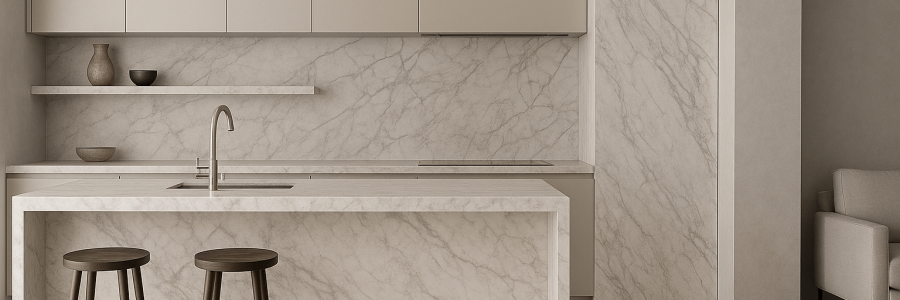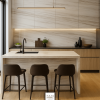Dolomite vs Marble
Key Differences and Best Applications
Composition & Formation
Dolomite and marble share a metamorphic origin, yet they differ chemically. Dolomite rock consists of calcium magnesium carbonate, whereas marble derives from recrystallized limestone (calcium carbonate) under heat and pressure. Consequently, dolomite often exhibits greater resistance to acidic environments. Moreover, subtle beige or light-gray veining typifies dolomite, while marble typically displays bolder gray or black streaks. For more on the geology behind these stones, visit the USGS carbonates overview
Durability & Performance
In practice, Dolomite vs Marble comes down to durability needs. Dolomite’s higher resistance to chemical etching makes it ideal for kitchen countertops or exterior facades exposed to acid rain. Marble, however, offers a classic luxury aesthetic with somewhat higher porosity, requiring more frequent sealing. Therefore, projects demanding minimal maintenance often favor dolomite. Conversely, marble remains a go-to for gallery walls and feature flooring, where its softer veins and deeper polish create striking visual impact.
Appearance & Veining
Visually, marble’s dramatic veining and high-gloss finishes capture light and draw the eye. In contrast, dolomite’s subtler patterns lend a more uniform backdrop. Additionally, marble is available in a wider palette—from crisp whites to deep blacks—while dolomite tends toward warmer, earthier hues. As a result, the choice often hinges on whether the design calls for a quiet, consistent floor or a bold, statement-making surface.
Maintenance & Care
Maintenance protocols diverge as well. Marble requires sealing every 6–12 months to guard against staining, especially in high-spill areas. Meanwhile, dolomite’s lower porosity means annual sealing often suffices. When cleaning, both stones respond best to pH-neutral cleaners; nevertheless, marble demands prompt spill management to avoid etching. Consequently, facility managers may prioritize dolomite for public spaces where heavy foot traffic and accidental spills are common.
Ideal Applications
Understanding each stone’s strengths helps define its best uses. Dolomite excels in:
-
Exterior façades and pool surrounds, thanks to its acid resistance
-
Commercial countertops where low maintenance is critical
Meanwhile, marble shines in:
-
Feature walls, receptions, and luxury lobby floors, where aesthetic richness is paramount
-
Bespoke furniture details such as bookmatched tabletops
Ultimately, blending both stones in a single project can create dynamic contrasts—in floor borders, stair risers, or accent niches.
Collaborative Design Support
Beyond superior stone and logistics, architects appreciate our collaborative approach. For example, we curate seasonal lookbooks and virtual showroom tours to showcase new materials. Likewise, annual trend reports inspire fresh design concepts—from floating staircases clad in Gris Pulpis to reception desks of bookmatched Calacatta Oceans. Furthermore, workshops and webinars foster knowledge-sharing, empowering architects to integrate Turkish stone innovations into residential, commercial, and hospitality projects.













